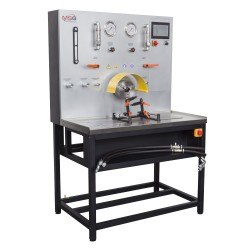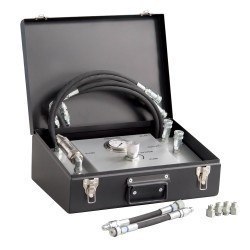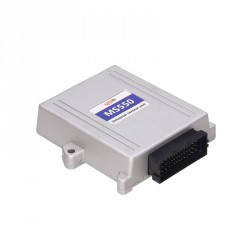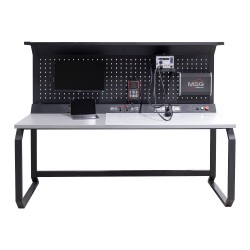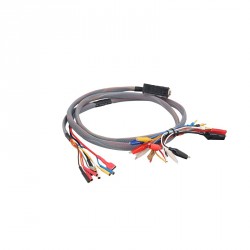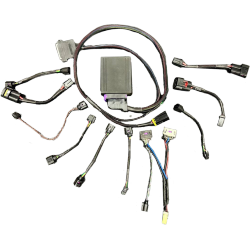- Home
- Equipment
- Equipment for diagnostics of starters and alternators
- Equipment for diagnostics of automotive air conditioning system
- Equipment for diagnostics of electric power steering (EPS) unit
- Equipment for diagnostics of power steering unit
- Equipment for diagnostics of brake calipers
- Equipment for diagnostics of shock absorbers
- Equipment for particulate filter flushing
- Equipment for diagnostics of electric vehicles
- Special tools
- Components
- Turnkey business
- Training
- FAQ
- Blog
- News
- Our story
- Location
- Equipment
- Equipment for diagnostics of starters and alternators
- Equipment for diagnostics of automotive air conditioning system
- Equipment for diagnostics of electric power steering (EPS) unit
- Equipment for diagnostics of power steering unit
- Equipment for diagnostics of brake calipers
- Equipment for diagnostics of shock absorbers
- Equipment for particulate filter flushing
- Equipment for diagnostics of electric vehicles
- Special tools
- Components
- Turnkey business
- Training
- FAQ
- Blog
- News
- Our story
- Location
Equipment for diagnostics of electric power steering (EPS) unit
- Equipment
- Equipment for diagnostics of starters and alternators
- Equipment for diagnostics of automotive air conditioning system
- Equipment for diagnostics of electric power steering (EPS) unit
- Equipment for diagnostics of power steering unit
- Equipment for diagnostics of brake calipers
- Equipment for diagnostics of shock absorbers
- Equipment for particulate filter flushing
- Equipment for diagnostics of electric vehicles
- Power steering rack shafts
- Popular
- Special tools
- Power steering pump rotors
- Turnkey business
- Training
- Components
- Electric power steering pump boards
- Equipment spare parts
- Tools for Repair of Power Steering
- Alternators and starters
- Set of tools for repair of starters and alternators for sale in Great Britain
- Set of tools for repair of starters and alternators for sale in Canada
- Set of tools for repair of starters and alternators for sale in the USA
- A set of tools for repairing starters and alternators for sale in Australia
- A set of tools for repairing starters and alternators for sale in South Africa
- Repair kit for starters and alternators for sale in Portugal
- Set of tools for repair of starters and alternators in Spain
- Set of tools for repair of starters and alternators in Brazil
- Steering system
- Tool for repair of power steering system for sale in Canada
- Power steering repair tools for sale in USA
- Power steering repair tool for sale in Great Britain
- Power steering repair tool for sale in South Africa
- Power steering repair tool for sale in Australia
- Tools for power steering for sale in Portugal
- Tools for power steering for sale in Spain
- Tools for power steering repair for sale in Brazil
- Alternators and starters
- Spanish
MS561 PRO – Tester for diagnostics of electric power steering units
The MS561 PRO tester is designed for diagnosing removed components of Electric Power Steering (EPS) units from automobiles. These units are controlled using protocols such as CAN, CAN-FD, FlexRay, as well as those controlled through two independent CAN buses. In its highest configuration, the tester allows diagnosing components from nearly 4000 car models, including the most modern ones.
* Complete set could be different as on the photo. Please specify set content with the manufacturer
MS561 PRO – Tester for diagnostics of electric power steering units
Supply voltage, V | 230/120 |
Supply mains type | Single-phase |
Supply frequency, Hz | 50/60 |
Power consumption, W | 2000 |
Dimensions (L x W x H), mm | 355×255×93 |
Weight, kg | 6 |
Checking EPS units | |
Output current, А | Up to 100 А (90 А for 120 V power supply) |
Simulated signals | - Ignition on/off - Engine start/stop - Vehicle speed - Steering wheel rotation speed |
The tester works with data transmission buses | CAN CAN-FD FlexRay |
Additional features | |
Types of protection | - Short circuit - Overload - Overheat |
Connecting a diagnostic scanner | OBDII |
Connection to PC | USB/Bluetooth |
Software update | Available |
MS561 PRO – Tester for diagnostics of electric power steering units
MS561 PRO – Tester for diagnostics of electric power steering units
The MS561 PRO tester is designed for diagnosing removed components of Electric Power Steering (EPS) units from automobiles. These units are controlled using protocols such as CAN, CAN-FD, FlexRay, as well as those controlled through two independent CAN buses. In its highest configuration, the tester allows diagnosing components from nearly 4000 car models, including the most modern ones.
* Complete set could be different as on the photo. Please specify set content with the manufacturer
Application:
The MS561 PRO is used to diagnose EPS racks, columns, and Electric Hydraulic Power Steering (EHPS) pumps separately from the vehicle's electrical system. The tester supplies the diagnosed EPS unit with electrical power and specific software codes required to initiate the unit. During diagnosis, the tester simulates the vehicle's speed and steering wheel rotation speed for the EPS unit.
To enhance accuracy and simplify diagnosis, the tester displays:
• The connection scheme of the universal cable to the EPS unit;
• The normal (correct) consumption current that the tested unit should exhibit;
• Data packets received from the unit and their decoding;
• A list of non-critical errors.
The tester is equipped with an OBD II connector, allowing connection to an external diagnostic scanner for:
• Reading and clearing errors.
• Real-time data viewing.
• Reading information stored in the control unit.
• Coding.
• Software updates.
• Sensor calibration, etc.
The MS561 PRO tester can PROGRAM VIN in units: OP402, OP406, CR408, CR414, and also reset the rack binding to the car in units: RE418, NI403. Therefore, there is no need to use additional devices such as SVCI2020 or Renolink.
The advantages:
• Diagnostics of EPS units controlled via CAN, CAN-FD, and FlexRay buses, as well as those controlled by PWM signals and special signals.
• Diagnostics of EPS units controlled via two independent CAN buses.
• Diagnostics of steering racks without control unit using the MS550 adapter.
• Diagnostics of torque sensors separately from the rack.
• VIN programming in the rack control unit.
• Resetting the rack binding to the car.
• Ability to set (change) the OBDII connector pinout.
• The tester displays maximum data on the unit to facilitate diagnostics.
• Diagnostics of units with a maximum consumption current of 100A.
Supply voltage, V | 230/120 |
Supply mains type | Single-phase |
Supply frequency, Hz | 50/60 |
Power consumption, W | 2000 |
Dimensions (L x W x H), mm | 355×255×93 |
Weight, kg | 6 |
Checking EPS units | |
Output current, А | Up to 100 А (90 А for 120 V power supply) |
Simulated signals | - Ignition on/off - Engine start/stop - Vehicle speed - Steering wheel rotation speed |
The tester works with data transmission buses | CAN CAN-FD FlexRay |
Additional features | |
Types of protection | - Short circuit - Overload - Overheat |
Connecting a diagnostic scanner | OBDII |
Connection to PC | USB/Bluetooth |
Software update | Available |






















